If you're new to the RV life or just considering it, there's one thing that hands down scares off more people than anything else. That is, dumping the septic tank. When people think about having a small kitchen or short showers, it's no big deal. But then, when they start thinking about the hassle of dumping out the "toilet" tank, that's when they start doubting the whole thing. So that brings up the first obvious question - how often does it need to be dumped anyway? Just how big is an RV septic tank?
The size of the tank changes with the size of the RV. However, they're often more accomodating than most people expect. In a small RV, you can expect at least 15 gallons for the black water and a gray water tank of 30 gallons. A larger RV might easily have tanks as large as 50 gallons each.
But if you aren't sure what that means, keep reading. We'll explain the difference between black water and gray water and cover the third tank your RV has - fresh water. We'll compare what you need to know about the sizes, how and when to dump, how to know it's time to dump, and more.
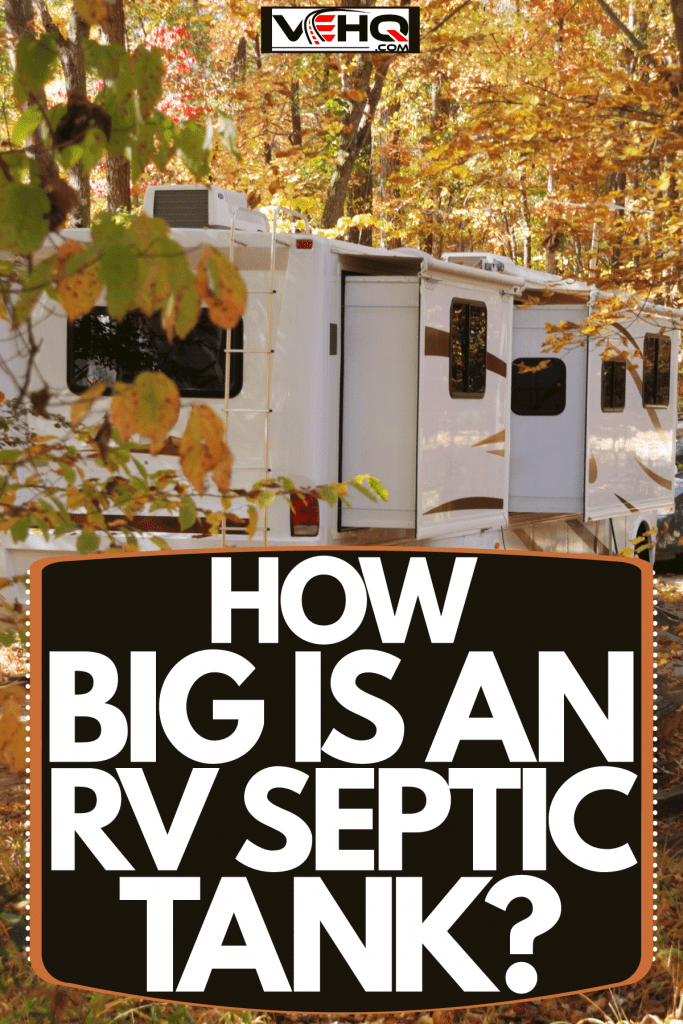
What Are The Different Tanks?
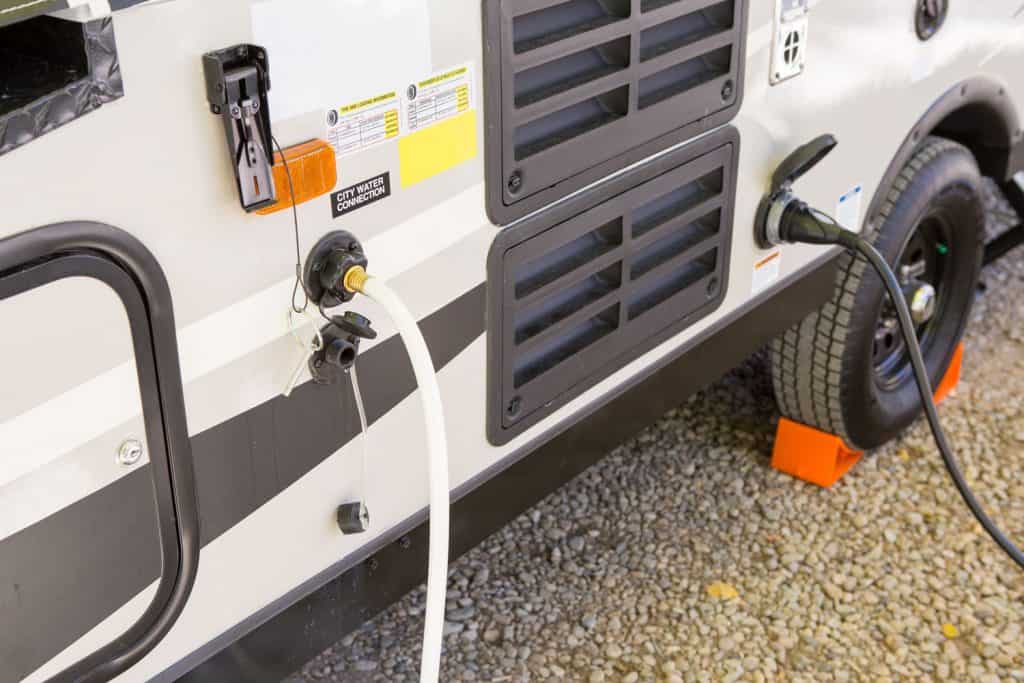
How Many Gallons Does An RV Black Water Tank Hold?
The size of each tank varies with the size of the RV. An RV made to house eight people will need larger tanks than an RV sized for two.
As a general rule, the fresh water tank is the largest. According to RVing Know-How, it holds anywhere between 20-100 gallons. The gray water tank averages 50 gallons. Black water tanks hold 18-64 gallons.
While a larger tank might seem ideal, it isn't always. Having a tank that is sized "just right" for your RV is the best. A large tank will either be empty when it's barely used or take too long to fill. Either one can cause problems with odors and make it challenging to flush the tank clean. A small tank is just frustrating - who wants to have to find time to dump every day?
It's a good idea to be familiar with your specific RV and the tank size. This helps you get an estimate of just how many gallons you fill each day. This way, if you stay somewhere without a dump station or hookups, you can anticipate how many days the tank should last. It also can help if you take a longer trip than normal and need to plan time for dumping.
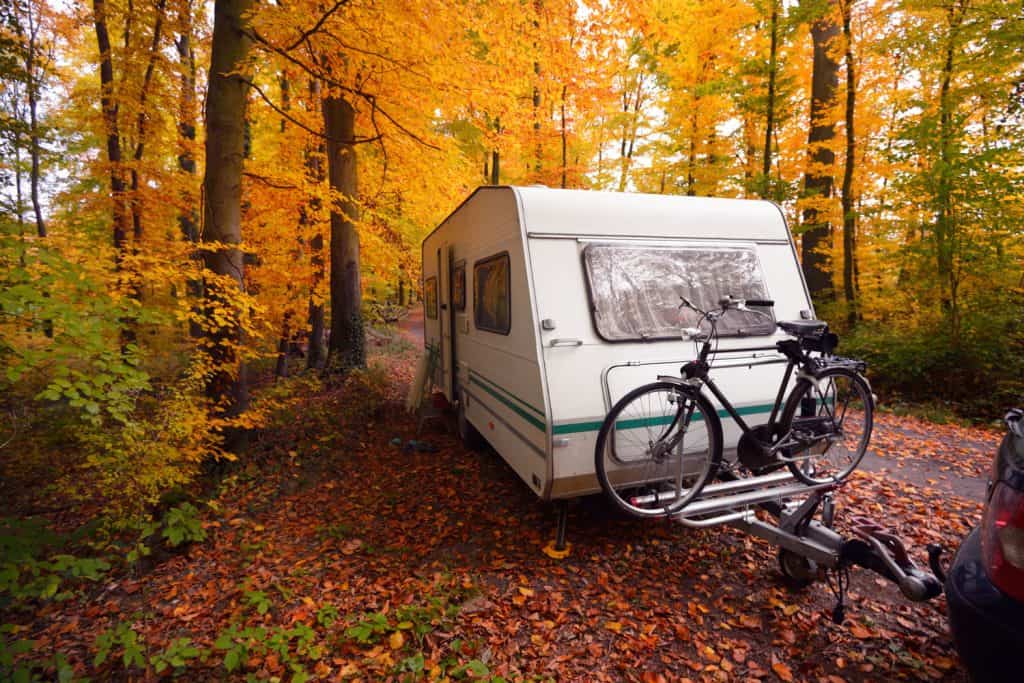
How Often Do You Need To Dump RV Waste?
Dumping the black water tank takes some amount of precision. You don't want to go too long, or it might start to smell. But, believe it or not, according to Colton RV, the more common problem is dumping too quickly.
Breaking down the waste in the black water tank takes time. And the fuller the tank, the easier it is to flush out. If there's not much in the tank, solid waste tends to stay behind when you dump it. There isn't enough liquid to flush it out properly.
You should try to avoid dumping a tank less than 2/3rds full. The closer to full, the better. Many tanks have sensors that can help judge this. Just remember that these sensors may not be as accurate after a few years, particularly if there's a lot of toilet paper sticking to the sensors. This is one of the reasons that you should use RV toilet paper, which breaks down easier than regular toilet paper. Avoid using excessive amounts of toilet paper as well, which can wreak havoc on your system.
And remember, the longer you can wait, the more time the waste has to break down in the tank. Aim for a few days to a week for the best results. This makes flushing it out easier.
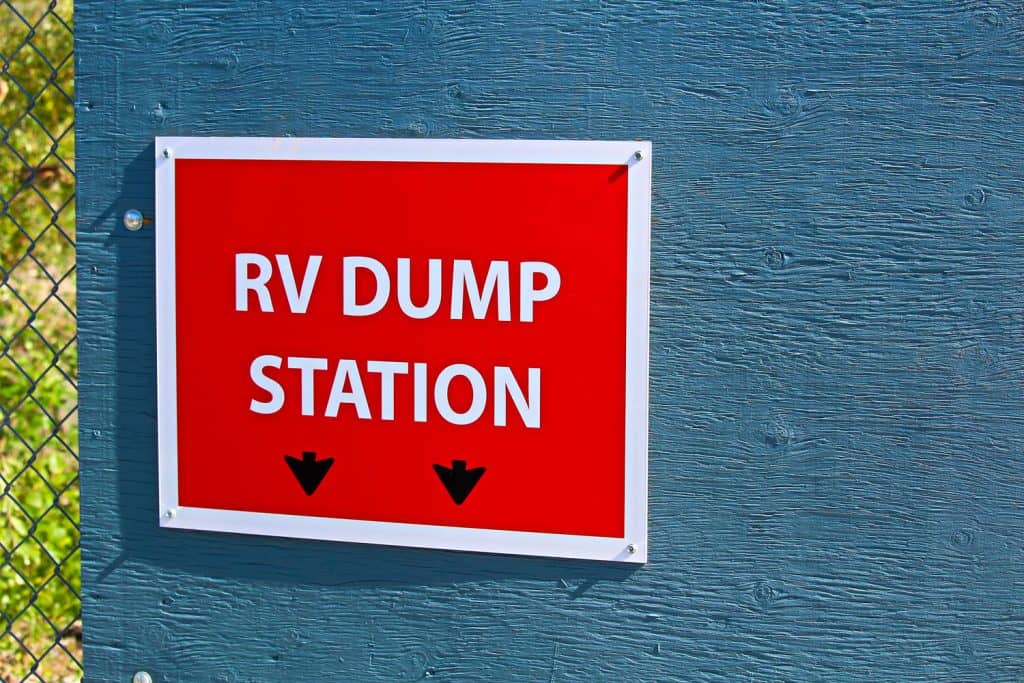
Can You Dump Black Water On The Ground?
Never dump the black water tank out on the ground. It's full of bacteria and unsafe. It can spread disease and cause serious harm when it enters the ecosystem. Always dispose of black water waste properly at an RV dump station.
The gray water tank, on the other hand, isn't quite so toxic. It can't be dumped "anywhere" - there are still safety concerns to address. The soap, for example, can be damaging to the environment. Food particles are another concern. But with proper filtration, some RV owners find ways to use the water elsewhere, reducing water waste.
Where Is The Black Water Tank In My RV?
The black water tank is located underneath the RV carriage, next to the gray water tank. Of course, if you have two separate tanks - some small RVs use just one.
Finding and dumping the black water tank can be intimidating for a first-timer. This helpful video can make you more comfortable using a dump station and emptying the black water tank yourself. Always start with the black water tank and then the gray water next.
How Long Will A Black Water Tank Last?
What Are Black Water Tanks Made Of?
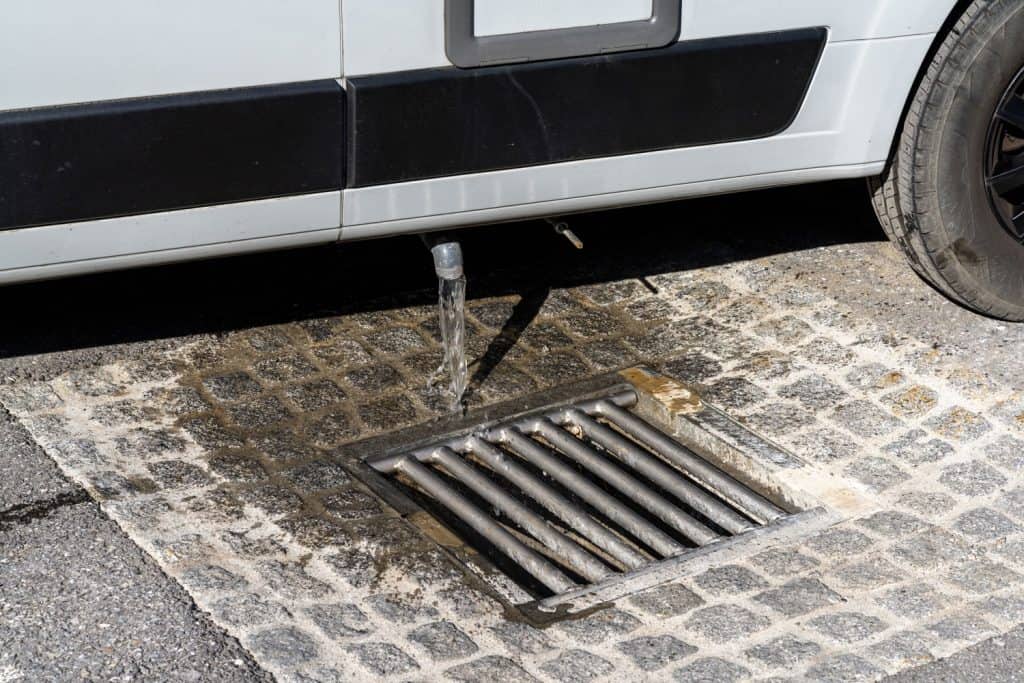
In Closing
Most RVs have three tanks. The fresh water tank holds the potable water waiting for use. The gray water tank collects the used water from the shower and sink. The black water tank is for the used toilet water. Some RVs do not have a gray water tank, and all the used water collects in the black water tank.
For best results, dump the black water tank when it is close to full - never less than 2/3rds. Dump the tank every couple of days to a week. Always dispose of black water at an RV dump station for legal and sanitary reasons. Keep your system in good shape by never letting waste sit - always dump before storage. Flush the tank regularly with a hose to keep waste left by accident from accumulating in the tank.
If you enjoyed this article, please consider these next:

